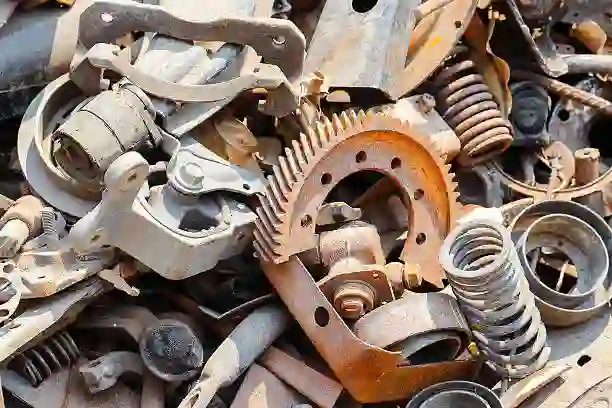Scrap metal recycling is an important industry that not only helps in reducing waste but also saves energy, reduces carbon emissions, and conserves natural resources. In order to maximize the value of scrap metal, it is essential to know how to identify and sort different types of scrap metals.
Ferrous Metals
Ferrous Metals refer to those metals that contain iron, such as steel and cast iron. They are magnetic, heavy, and often rusted. And they are favored for their tensile strength and durability. To identify ferrous metal, you can use a magnet, if the magnet sticks to the metal it is likely ferrous. You can also look for signs like rust or corrosion as they are common in ferrous metals.
When it comes to sorting ferrous metals, you can do manual sorting or can use the magnetization method as well. Magnetization involves passing the metal through a magnetic field to separate it from other materials whereas manual sorting involves visually inspecting the metals and separating them according to their type.

Non-ferrous Metals
Non-ferrous metals refer to those metals that do not contain iron and are often more valuable than ferrous metals. They may be aluminum, copper, brass, and stainless steel. They are non-magnetic, lightweight, and often have a shiny or reflective appearance.
To identify non-ferrous metals, you can use a few different techniques like the spark test which involves grinding the metal against a grinding wheel to create sparks. As each metal produces a different type of spark, it can help to identify the metal. And you can also use a magnet to confirm that the metal is non-ferrous.
When it comes to sorting the non-ferrous metals, it takes a bit more effort than the ferrous metals. You can manually sort the metals by visual inspection or you can also use a specific gravity separation that involves placing the metal in water to determine its density. Besides these, you can use another method, that is eddy current separation which uses magnetic fields to separate different types of metals.
Other types of scrap metal
In addition to ferrous and non-ferrous metals, there are other types of scrap metals that require special identification and sorting methods. They include precious metals like gold, and silver, and exotic metals such as titanium and nickel.
To identify these metals you may need to use specialized equipment and techniques such as X-ray fluorescence spectroscopy. It can help to identify the composition of precious and exotic metals and gas chromatography-mass spectrometry can help to identify the specific alloys
In conclusion, identifying and sorting scrap metal is an essential part of the recycling process. By understanding the key characteristics and sorting methods of different types of metals you can maximize the value of scrap metal by ensuring its proper disposal. If you are looking for a scrap metal dealer to sell your scrap metal then you can contact Wise Scrap Metal and Recycling and get the best value for your scrap.

